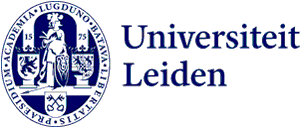
Leiden Graduate Journal: the first step to a career in academics
Publishing an article as early as during your studies. Master's students of Nanne Timmer and Astrid Weyenberg are doing it. In the new course 'Leiden Graduate Journal Culture and Society' they are creating an academic journal.
More than a paper machine
‘The university would like to have a bridge between education and research', says Weyenberg, 'but there are relatively few ways to build that bridge, especially for students. They often receive feedback on their papers at the end of a course. This is then never implemented, even though rewriting is an important part of academic work and some papers have the potential of being published.’
‘As a university, we don't want to be just a paper machine’ Timmer adds. ‘We want to communicate with the outside world, to explore the boundaries between the university and society. It energises students to create something interesting and readable for others.’
Faculty-wide course
The lecturers therefore decided to set up an interdisciplinary journal, following the example of foreign graduate journals. It was an organisational challenge, because the structure for offering a faculty-wide course within which the articles could be written does not exist, but they succeeded. After a call for papers with the theme 'crisis', Timmer and Weyenberg selected ten students with promising proposals. They have since written the first draft of their articles. On 21 April, they will present their first findings to interested parties.
On 21 April, the students will present their first findings in the symposium ‘Jumping Borders, Tackling Crises’. Interested parties can register here.
Collaboration
‘It is nice that Nanne and I can draw from our own experience for this course’, says Weyenberg. ‘Some students found it difficult that they had to hand in a first draft of their article at the beginning of the course instead of at the end, for example. We explained that this is practice in the academic world. We deliberately do not paint a romantic picture, so that students with academic ambitions know what they are getting into.’
Nevertheless, the lecturers notice that the students like the project. ‘You notice that students want to do more than they are offered’, says Weyenberg. ‘If you give them space, they take on tasks. They did not only write articles, but also searched for peer reviewers and designed flyers. They also came up with the title LEAP.’
‘The fact that this is a joint project also stimulates the students’, Timmer adds. ‘The students are in a group in Teams, in which they motivate each other.’ Weyenberg: 'I hope that this collaboration will continue. We should get rid of the idea that an academic is someone who has to work alone in an attic.
Is this the future?
‘It is nice for us to see how the students want to present themselves and where they think the urgency of the university lies’, says Timmer. ‘This year, mainly articles are being written, but if students want to choose an innovative form, they can. Maybe next year we will see video essays.’
Nanne Timmer is a University Lecturer at the Leiden University Centre for the Arts in Society.
Astrid van Weyenberg is a University Lecturer at the Leiden University Centre for the Arts in Society.
